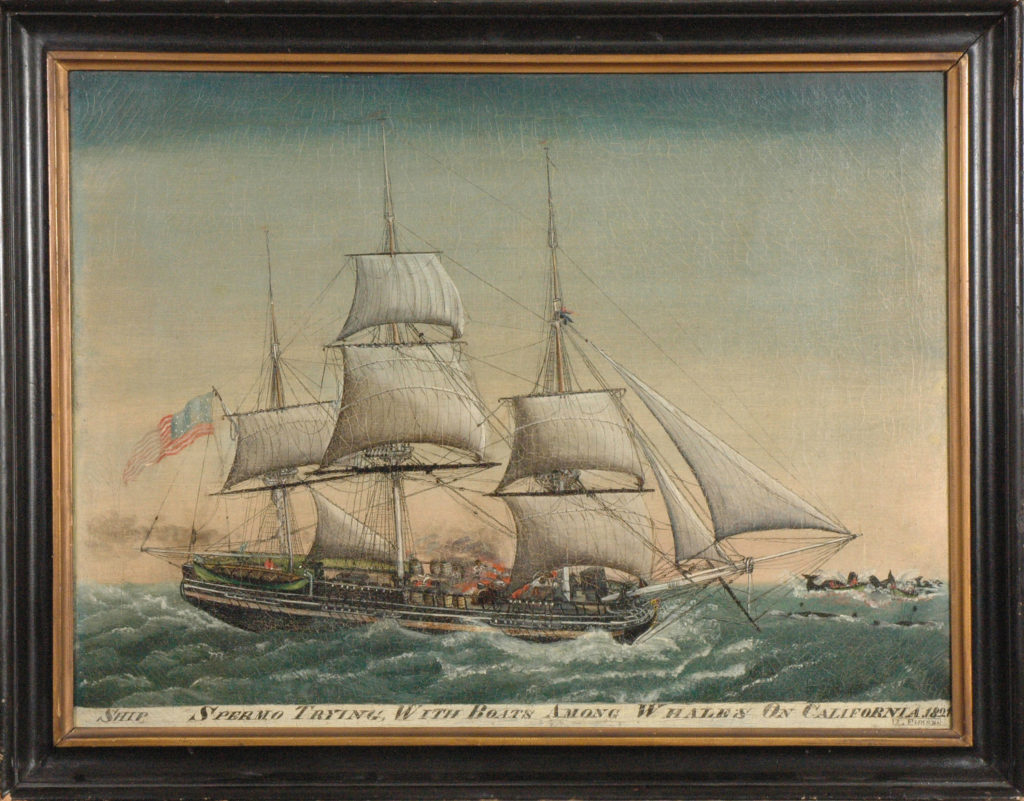
The site of SMITHS YARD in Hanover is about 300 yards below the old North River Bridge, and about 12 miles up-river from the ocean (although the distance was 15 miles until the Portland Gale altered the river in 1898). The cast iron sign that marks the location for this shipyard reads “SMITHS YARD LATER BARSTOWS LOWER YARD”, however, the Smith’s were not the first to build at this yard (Col. Bailey is given this distinction), nor did they build for the longest period of time (23 years vs 28 years by the Barstows). The Smiths did not build the most ships at this yard either (31 vs 43 built there by the Barstows). Despite this, the cast iron marker headlines this spot as “SMITHS YARD”. Although we can’t be sure exactly what the members of the North River Historical Association had in mind when they designed the sign back in 1919, I have developed a working theory: the Smiths were one of the most prolific builders in Hanover, they also built several more ships just up river from the LOWER YARD. The Barstow’s built more ships in Hanover, but their name graces the BARSTOWS TWO OAKS marker about 100 yards up river from the LOWER YARD. So the title “SMITHS YARD LATER BARSTOWS LOWER YARD” honors two of Hanover’s greatest shipbuilding families.
John Bailey was the first shipwright that we know of to build vessels at this site, most likely prior to the Revolutionary War. During the Revolution Bailey served the Continental Army under Colonel Thomas at Roxbury, and most likely fought at the Battles of Bunker Hill, Trenton, Princeton and Saratoga. Bailey himself was promoted to Colonel by the wars end and given command of a Regiment.
The four Smith brothers were involved with the ship building business by 1792: Albert, Josiah , Thomas and Millar. If not building ships themselves they were helping to finance their construction, becoming partners in their operation and sailing on board the vessels as master. They also used another yard about 200 yards upriver to build smaller vessels and as overflow when work load demanded it. More than half of the 31 vessels built at the Lower Yard by the Smiths were large vessels of 200 tons (a measure of the cargo the vessel could carry, not the weight of the vessel itself) or more, often used for trade with faraway ports in the Pacific and Indian oceans
In 1817 John B. and Elijah Barstow took over the Lower Yard as it was well suited for building the larger vessels that the market demanded. Many of the ships built at the Lower Yard were over 330 tons burthen, just under 100 feet long and would draw nearly 15 feet of water when fully rigged and loaded. These vessels were born on a river that today’s recreational boater struggles to navigate a 22 foot pontoon boat.
Briggs’ History of Shipbuilding on the North River catalogs 74 ships that were built by the Smith’s and Barstow’s at this yard between 1789 and 1846, more than one ship per year! A few of these ships have left their mark on history: the schooner ROANOKE, which you can read about in the blog post Sites of the North River Shipyard: Part 6, brought a band of local boys to San Francisco in 1849, the SPERMO was a whale ship out of Nantucket that has been preserved in the series of oil paintings, and the OENO, which wrecked in the Fiji island chain in 1823. William Cary was the only surviving crewman from the OENO, he lived among the islands for nearly 8 years, finally returning to Nantucket in 1831. You can read more about the adventures of William Cary in our next blog post.
